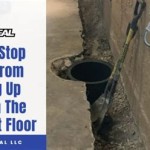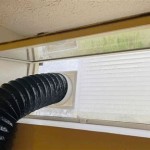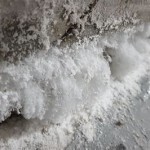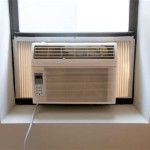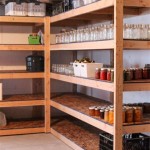Essential Aspects of Sealing Basement Walls for a Dry and Healthy Home
Damp or wet basement walls can lead to a host of problems, including mold growth, structural damage, and health issues. Sealing your basement walls is crucial to prevent these problems and create a healthy living environment. Here's a guide to the essential aspects of sealing basement walls:
1. Identify the Source of Moisture
Before sealing your basement walls, it's essential to identify the source of moisture. Common sources include:
- Groundwater seepage through cracks or gaps in the walls
- Condensation due to high humidity levels
- Water leaks from plumbing pipes or fixtures
2. Repair Cracks and Holes
Inspect your basement walls for any cracks or holes. Small cracks can be sealed using hydraulic cement, epoxy injection, or polyurethane foam. For larger cracks or holes, you may need to hire a professional contractor for repair.
3. Install a Vapor Barrier
A vapor barrier is a moisture-resistant material that prevents water vapor from penetrating the basement walls. It's installed on the interior side of the walls to create a barrier against moisture. Common vapor barrier materials include polyethylene sheeting, plastic vapor barrier paint, and impermeable fabrics.
4. Apply Basement Wall Sealer
Basement wall sealers are liquid or paste-like products that penetrate the wall's surface and form a waterproof coating. They can be applied to both interior and exterior walls, depending on the type of sealer. Choose a sealer specifically designed for basement walls and ensure it is compatible with the wall's material.
5. Drainage System
If groundwater seepage is a problem, installing a drainage system can help divert water away from the foundation and prevent moisture from entering the basement. Common drainage systems include sump pumps, French drains, and perimeter drains.
6. Ventilation
Maintaining proper ventilation in your basement is crucial to prevent condensation and moisture buildup. Install exhaust fans or open windows to circulate air and reduce humidity levels. Consider using a dehumidifier to further control moisture.
7. Regular Maintenance
Once your basement walls are sealed, regular maintenance is important to ensure their effectiveness. Inspect the walls regularly for any signs of damage or leaks. Reapply sealant as needed, especially after heavy rainfall or flooding events.
Conclusion
Sealing basement walls is a vital step in maintaining a dry and healthy home. By following these essential aspects, you can prevent moisture problems, protect your property, and improve the overall air quality and comfort of your basement.

How To Waterproof Basement Walls From Inside Sani Tred

Waterproofing Basement Walls Dos And Don Ts To Remember Bob Vila

How To Waterproof Your Basement True Value

Exterior Basement Waterproofing You Get A Free Estimate Wall Solutions By Olshan

Best Way To Waterproof Your Basement Dry Pro

Dampproofing And Waterproofing For Foundation Walls Fine Homebuilding

How Does Interior Basement Waterproofing Work

Waterproofing Basement Walls From Inside Only Is Usually Not Enough Nashville Foundation Repair Specialists

The 3 Major Approaches To Basement Waterproofing News And Events For Systems Inc

Waterproofing Basement Floor Slabs And Walls Waterproof Magazine
Related Posts
